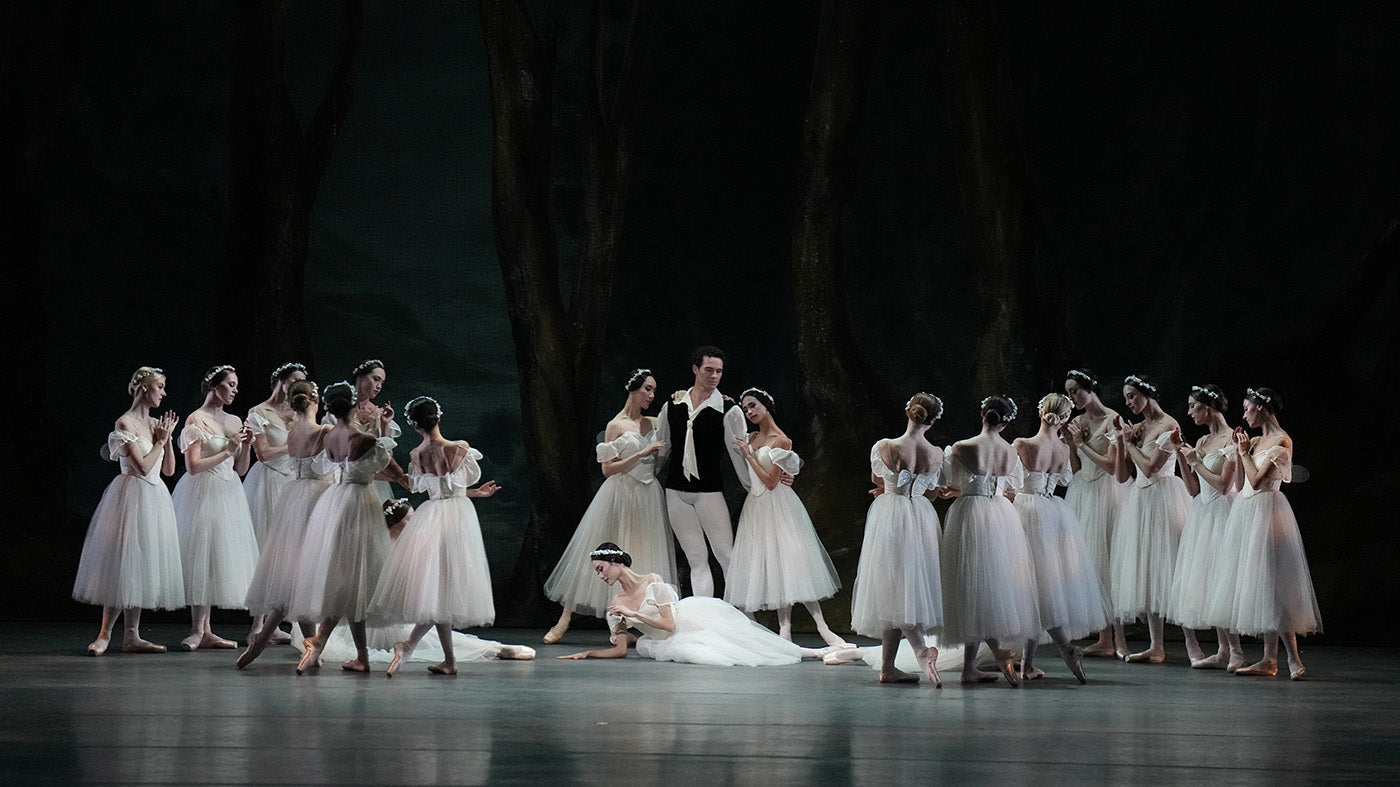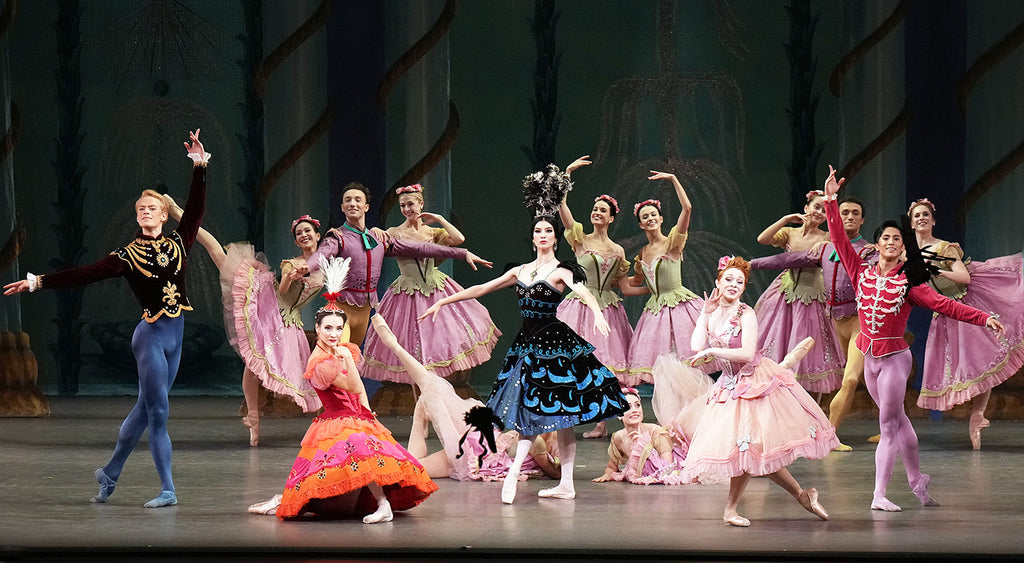While “Sylphides” is a romance, “Gala Performance” fully embraces its role as caricature. Tudor’s piece—set to three works by Sergei Prokofiev—shares a similar tone to the screwball comedies popular in Hollywood at the time it debuted. It’s all a bit tongue-in-cheek: a performance of a performance, which starts, first, with a “behind-the-curtain” scene wherein we meet the cast of characters. When the ballet-within-a-ballet begins, three ballerinas (Christine Shevchenko as the Russian, Chloe Misseldine as the Italian, and Zimmi Coker as the French) take their turns as the center of attention amid the supporting ensemble cast.
There is particular delight in seeing some of the best dancers in the world do their steps wrong, on purpose. Shevchenko’s character is a total ham, and she smiles when she turns, keeping her shoulders up and her elbows out in dramatic fashion. Misseldine is the diva, walking across the stage impossibly slowly, her arms flared out in front of her. The walk, alone, gets lots of laughs, but more delightfully unexpected are the moments in which she tries to hold a sort of crumpled arabesque on pointe, keeping her torso unnaturally low to the floor. At one point, Jarod Curley, her partner, has to plié so deeply he’s practically in skandasana. It’s absolutely absurd. It’s a total delight.
Coker, playing the ingenue, is less dramatically comedic than Misseldine and Shevchenko—she brings more of a bubbly, playful presence to her pas deux with Takumi Miyake. Even in this comedic role, Coker’s potential is clear: dancing along these principals, the corps member holds her own with grace and vivacity.
“Gala Performance” would be far less successful if the dancers were far less technically skilled than they are. Shevchenko, for instance, can go from goofy exaggeration straight into a sequence of pitch-perfect fouettés. But admittedly, the comedy gets far more power here than the dancing itself. Because of the piece’s numerous curtain calls, both during and at the end of the work, it feels like applause makes up half of its runtime.











comments